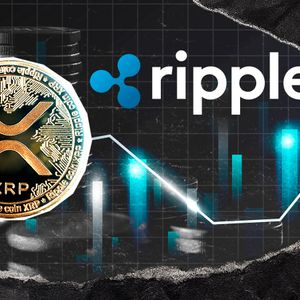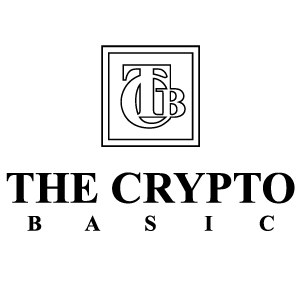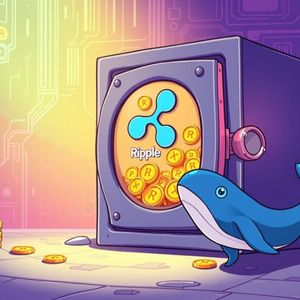Summary DeFi Technologies bridges traditional finance and crypto via ETPs, asset management, and related services, benefiting from industry tailwinds and growing AUM. The business model relies heavily on ETPs, but most digital assets are owed to ETP holders, creating significant leverage and potential solvency risks. While management is pursuing growth and product diversification, current innovations do not sufficiently de-risk the balance sheet or address the core leverage issue. Given high valuation multiples and unresolved risk factors, I rate DEFT as a Hold, awaiting a more attractive risk-reward profile before recommending a Buy. DeFi Technologies ( DEFT ) is a growing player in the crypto space. Despite industry tailwinds and recently growing AUM, I declined to rate the stock a Buy, with much of my concern stemming from its strategy around its ETP-based asset management. Business Model DeFi bills itself as a financial technology company that creates convergence between traditional capital markets and decentralized finance. This is currently reflected through the following revenue sources provided by their subsidiaries: Asset Management Arbitrage Trading Crypto market making Investments in related ventures Research platform Advisory Services Q2 2025 Financial Report As the table above indicates, the most significant contributors to total revenue are the returns on their digital assets, exchange-traded products (ETPs), and equity investments (which are mainly indirect stakes in digital assets), so I'll give a greater share of my attention to these areas in this thesis, particularly as the other revenue sources are secondary, adding on neatly to the primary sources but unlikely (in my view) to grow to comparable levels. Balance Sheet (Q2 2025 Financial Report) Looking at their balance sheet, the bulk of their total assets are digital assets (a portfolio of various cryptocurrencies). Many of these are simply held, but portions are set aside for loans and staking (which provide yield). Sample of Crypto Holdings (Q2 2025 MD&A Report) A look at their Q2 2025 MD&A Report (pg. 14) reflects a very diverse portfolio of crypto assets, valued at $553M as of June. Almost half is in Bitcoin ( BTC-USD ) at $262M, with other more prominent cryptos such as Ether ( ETH-USD ) and Solana ( SOL-USD ) making up prominent positions. Altogether, the portfolio is spread across dozens of positions. This is mainly explained by Valour's (their subsidiary) asset management business through ETP products. Sample of ETP Offerings (Q2 2025 Company Presentation) The slide above shows that they offer several different ETPs. These are mainly indexed to follow the individual items, which usually entails a single cryptocurrency. While they earn a flat 1.9% management fee across their ETP products, these also can explain their arbitrage business. ETPs are known to have NAV discrepancies from their index from time to time, and arbitrage trades can close that gap favorably for DeFi. Balance Sheet (Q2 2025 Financial Report) Looking now at the liabilities, the biggest item, far and away, is ETP holders payable. In essence, this is the value that clients who invest in their ETP products are owed, after management fees. Sample of ETP Holders Payable (Q2 2025 Financial Report) These explain where most of the digital assets are allocated. The payables listed above roughly equate to the reported values of their digital assets, meaning that very few of the assets on the balance are ultimately DeFi's for keeping. As explained in their Q2 MD&A report (pg. 55): Valour Cayman’s ETPs are non-interest-bearing debt securities that are designed to track the return of an underlying digital asset. The current Valour ETP program in place does not provide that those securities are collateralised. Although their yield references an underlying benchmark or asset, the ETPs are similar to unsecured, listed bonds. The logic of such securities is that investors can access them in a normal brokerage account, which they cannot do with crypto directly. Overall, it's a business model that functions in line with its mission statement. It provides a mixture of financial services that bridges the gap between normal capital markets and the decentralized world of crypto. Outlook and Valuation While there are adjacent sources of revenue, I believe these will only be successful if the core business in the ETPs is successful. I think there's a course of events where the company could enjoy strong growth, and I think there's also room for big problems to materialize. June 2025 Investor Deck Management has been discussing growth opportunities, largely through expansion into international capital markets, where they can issue more ETPs. June 2025 Investor Deck They also relate that the market for crypto has been growing, particularly for the BTC and SOL products. While AUM peaked coming out of 2024 and declined, it has recovered about midway through the year, coinciding with President Trump's regulatory embrace of stablecoins and blockchain, marked by his signing of the GENIUS Act. With secular trends favoring crypto and their expanding footprint, it stands to reason that a business like theirs will benefit a great deal. Balance Sheet Items (Q2 2025 Quarterly Report) Nevertheless, I think it's important to address the discrepancy between the ETP holders payable and total digital assets. While it explains much of their allocation among digital assets, the fact that they have about $220M less in digital assets than the consolidated liability of these ETPs effectively means they are using these products as leverage to fund the other portions of their business. Normal leverage comes with a fixed principal balance, something that doesn't simply decline on its own. Even variable-rate loans only adjust periodically, following incremental moves by a central reserve bank. ETPs are not like these things. Indexed to the return of an underlying item, the liability can balloon if the returns are strongly positive. Be investing this capital in other parts of the business, they are essentially betting that they can outperform their own products, at least soon enough that they could reposition as needed. Nevertheless, I think my point is made. As these products mature or are redeemed, there's a potential for a solvency problem. Cash Flow Statement (Q2 2025 Quarterly Report) As the cash flow statement shows, there is regular rotation of old and new ETPs, as much as a third of the balance of payables. Now the reverse logic also works. If the indexed items perform poorly, this limits the downside, effectively allowing them to invest with free capital. Of course, this requires the ETPs to perform poorly, but not so poorly that any company in crypto loses its raison d'être. With a market cap of $691M, it's well above its book value of $68.9M. Similarly, it's a big multiple (about 35) on its TTM earnings of $19.4M. Still a microcap in an industry with tailwinds, there is definitely potential for upside, but right now DEFT seems like it's priced only for that, not its plausible risk factors. There are ways in which this can be mitigated. During the Q4 2024 earnings call , they guided for a wider array of products in the future: So, we have a whole range of topics that will convert into productization for our end users. And obviously, digital assets is very interesting, but digital SX can also be mixed with various other commodities. We will see a lot of innovation happening with our recent acquisition of Neuronomics applying AI, not just to digital assets but also equities. Diversifying the business and capital commitments might de-risk the balance sheet quite a bit, but recent new products seem to be more of the same. Consequently, it's hard to see a compelling risk-reward asymmetry here. A multiple more like 20 would compensate investors better for the risk they assume with this business, and based on recent data, that would give a share price of about $1.17. Conclusion Operationally, DeFi has an astute business, connecting capital markets as we traditionally know them to the new world of crypto. In addition to its core business of asset management, it milks plenty of other revenue opportunities. On top of that, it's in an industry that is poised to enjoy tailwinds for the foreseeable future. The main risk is in the capitalization. Its ETPs give it liability that ETF issuers simply don't have to consider. As crypto is volatile and remains difficult to predict, so too is this liability. It's a toss-up, and I wouldn't pay a large growth multiple for that. More of a discount is warranted to improve the risk-reward picture. Until then, I give the stock a neutral Hold rating.
















